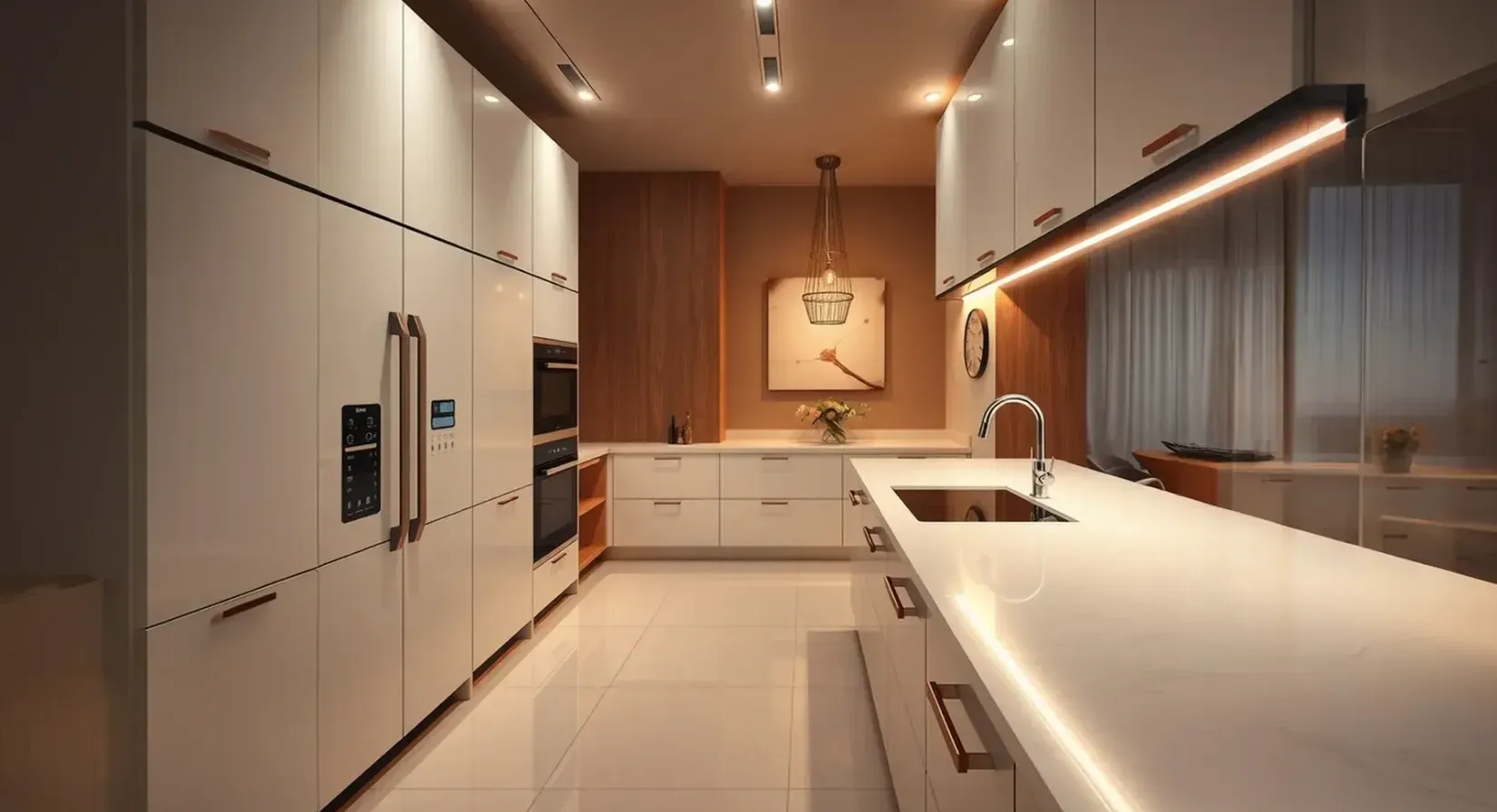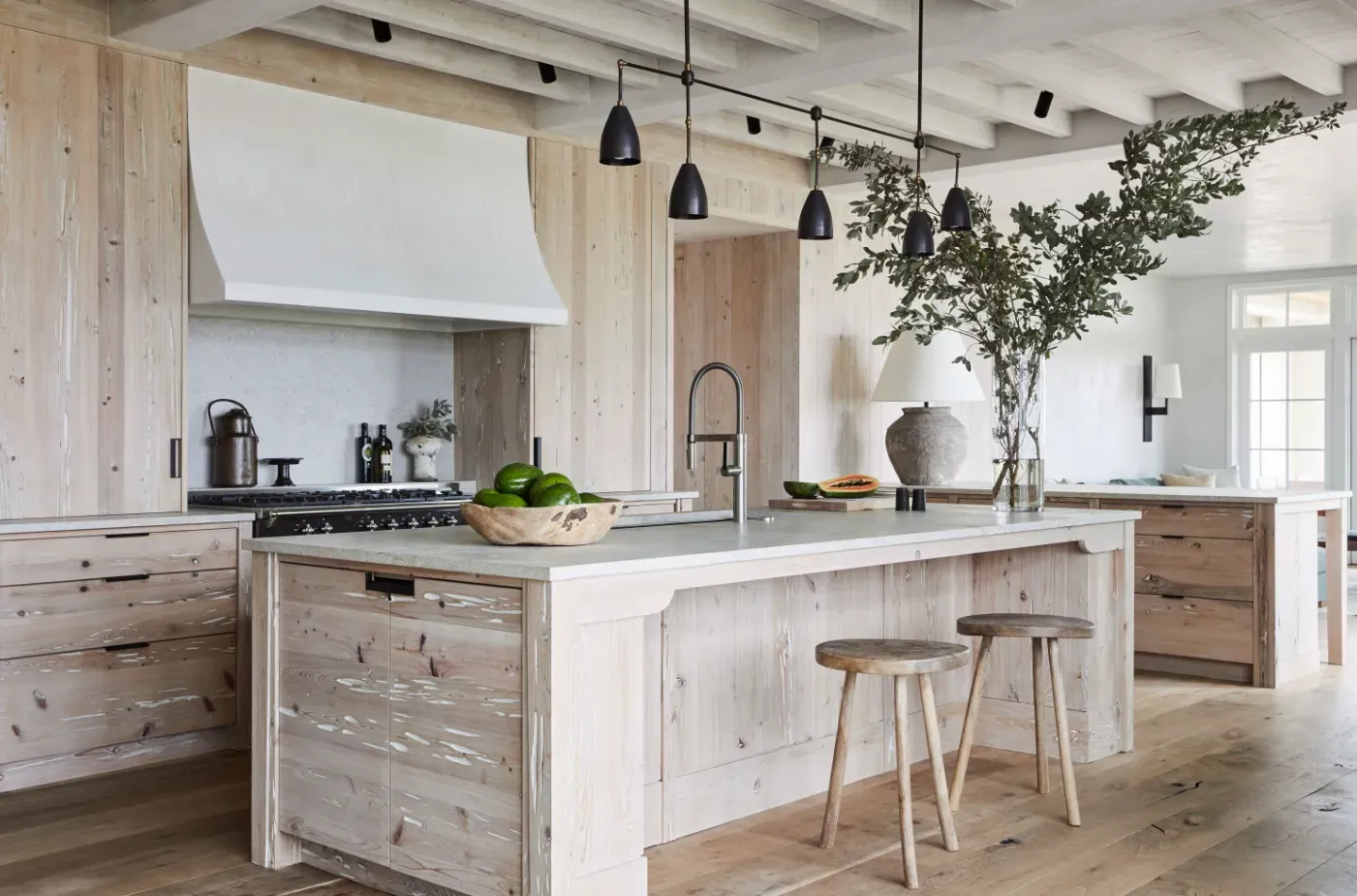Creating the Ultimate Smart Kitchen for the Indian Chef: From Appliances to Layout

By
Shrusti Naik
Posted on August 28, 2025. 10 mins

Creating the Ultimate Smart Kitchen for the Indian Chef: From Appliances to Layout
Introduction

The Indian kitchen is evolving fast, what was once a simple cooking space is now a hub of smart, efficient, and elegant functionality. The India household kitchen appliances market was valued at USD 15.16 billion in 2024, and is expected to reach USD 26.37 billion by 2033, driven largely by the demand for smart and multifunctional kitchen setups. Against this backdrop, a "smart kitchen" does more than integrate gadgets, it redefines workflow, energy use, safety, and the joy of cooking itself. This blog walks you through a thoughtful framework, from layout to appliances, so you can design a kitchen that truly serves the modern Indian chef.
Smart Appliances: The Heartbeat of a High-Function Kitchen
Smart appliances are no longer futuristic accessories, they’re becoming the kitchen's backbone. In India, the smart kitchen appliances market is expected to grow from USD 1.48 billion in 2025 to USD 4.42 billion by 2033, with a CAGR of 14.65%. AI-powered tools like smart refrigerators that track expiration dates, and ovens preheated via app or voice command, are transforming daily cooking.
Innovations tailored for Indian cuisine are also emerging. For instance, Rotimatic, an AI-enabled roti-making robot, now manufactures locally (Bangalore-Mysore region), delivering hands-free rotis in under two minutes. Wonderchef’s automatic “Chai Magic” appliance, launched earlier this month, simplifies tea making for Rs. 4,900 and is already capturing Himalayan traction. Besides. here are some Design Choices That Can Actually Increase Your Property Value
Kitchen Layout and Ergonomics: Where Design Meets Convenience
Efficient kitchens begin with smart layouts. In densely populated urban Indian homes, modular kitchens are the norm, and 2025 trends stretch that further with sleek layouts, concealed storage, and multifunctional islands.
Prioritize the working triangle, a smooth flow between the sink, stove, and fridge. Place smart appliances thoughtfully: a smart dishwasher next to the sink to streamline cleanup; an AI-powered oven within arm’s reach; and smart lighting over counters that adapts from prep mode to ambiance.
Vertical pull-outs, corner carousels, and slim cabinets enhance usability in compact homes, making every square foot work harder. Here's a guide that tells you what to Do (and Avoid) Room-by-Room if you are Designing Your First Home
Smart Lighting and Energy Efficiency
Lighting does more than illuminate, it sets the mood and impacts energy usage. With rising energy costs, energy-efficient appliances and systems are sought after. India’s Bureau of Energy Efficiency (BEE) labels are increasingly influential, encouraging consumers to choose smart, energy-saving kitchen devices.
Smart lighting systems tied into routines, bright whites for work, softer warmth for evenings, align with intuitive cooking rhythms. Combined with motion sensors near the pantry or cabinets, they enhance usability while conserving power. With all this, here is another way to enhance your home by Choosing the Right Color Palette for Each Room
Integrating Traditional Indian Cooking with Smart Solutions
The richness of Indian cuisine often involves time-intensive techniques, like kneading dough, deep-frying snacks, or tempering spices. While full automation remains elusive, smart tools are enhancing aspects of the process. In Bengaluru’s hotel kitchens, machines like vada makers or combi-ovens assist volume cooking, though nuanced tasks like adding ghee in Mysore Pak still rely on (expert) human timing.
In the home kitchen, smart pressure cookers and induction tops with presets that mimic traditional tadka or slow-cook settings bridge heritage and convenience. They deliver precision while honoring culinary rituals. Besides take a look at Designs You’ll Actually Want to Live With where you can include all these safety measures smoothly.
Local Manufacturing and Appliance Accessibility
Smart appliance innovation isn’t limited to global brands. Indian firms are expanding and gaining traction. TTK Prestige plans to grow its store network by 30% over four years to meet demand in smaller towns, grounded in revamped consumer spending backed by income tax reliefs. Similarly, Indian consumers are favoring homegrown kitchenware brands, attracted by stylish, durable, and safe products designed with compact urban living in mind. Take a look at these Kid-Friendly Interiors That Aren’t an Eyesore
Conclusion

Designing the ultimate smart kitchen for the Indian chef means blending modern functionality with cultural cooking needs. It requires smart appliances, modular design, energy-efficient lighting, and space-smart solutions, all delivered with a nuanced understanding of local cuisine and lifestyle.
From AI-powered roti makers and smart ovens to modular cabinetry and efficient layouts, the smart kitchen is as much about time management and health as it is about convenience. The Indian kitchen of 2025 isn’t just a room, it’s a dynamic ally in daily life. As accessibility grows through local brands and smarter design, it’s time for every urban kitchen to cook smarter, not harder. For those in pursuit of their dream home, investment opportunities, or a sanctuary to call their own, Jugyah provides top housing solutions with its intelligent technology
Frequently Asked Questions
Q1. What is a smart kitchen? A smart kitchen integrates app-controlled or AI-enabled appliances like smart refrigerators, induction cooktops, and automatic cookers to streamline cooking, save energy, and enhance convenience.
Q2. Are smart kitchen appliances popular in India? Yes. Smart kitchen appliances are rapidly growing in India, with the market expected to expand at a CAGR of 14.65% between 2025–2033.
Q3. Can smart appliances handle Indian cooking? Many can. Smart cookers and instant pots now include presets for traditional recipes. AI devices like Rotimatic automate Indian staples like rotis, simplifying preparation.
Q4. Is a smart kitchen expensive to set up? While smart appliances may cost more upfront, local manufacturing (e.g., TTK Prestige expansion) and increasing demand for kitchenware have made many smart devices more affordable.
Q5. Does smart technology save energy? Yes. Smart appliances often have energy-saving features, and BEE-rated products help reduce household energy consumption.